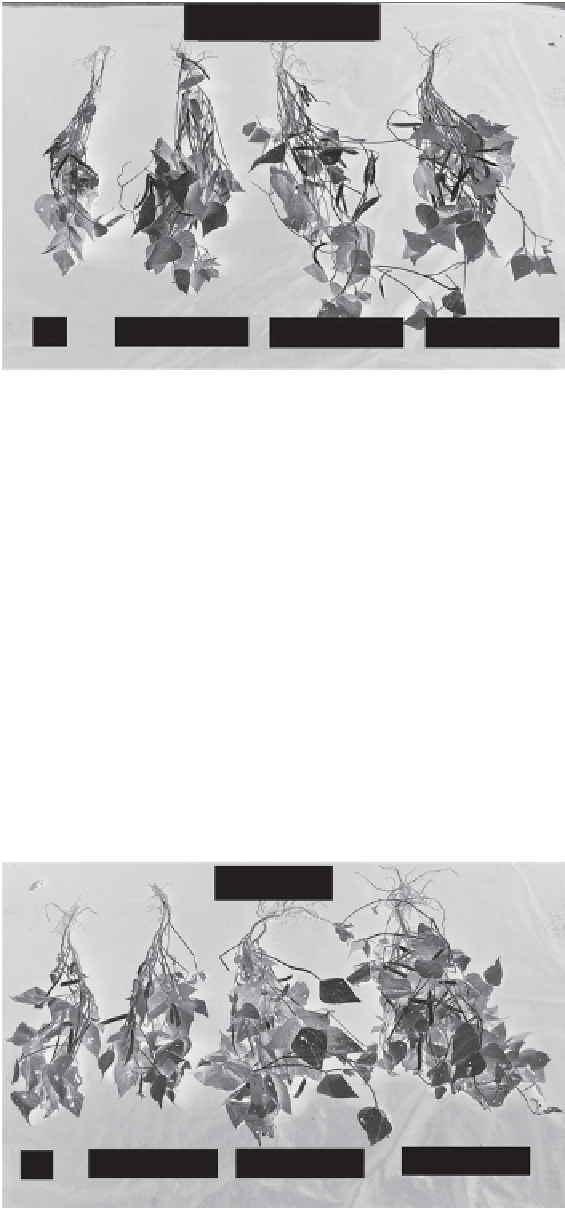Agriculture Reference
In-Depth Information
BRS 9435 Cometa
120 kg N ha
-1
0
0 + rhizobium
50 + rhizobium
FIGURE 7.4
Growth of dry bean genotype BRS 9435 Cometa at different N treatments in the second year
of experimentation. Left to right 0 kg N ha
−1
, 0 kg N ha
−1
+
inoculation with rhizobium, inoculation with rhi-
zobium + 50 kg N ha
−1
, and 120 kg N ha
−1
.
with rhizobia populations above 100 cells g
−1
soil. If the indigenous soil rhizobia population is not
sufficient, the selection of a suitable strain of rhizobia for the inoculation of legume seeds is the
first step in the production of legume inoculants. The basic criteria were to be (i) the ability to form
effective N
2
-ixing nodules with all the hosts for which the culture is recommended, (ii) the capacity
to do this under a wide range of agroecological conditions, and (iii) the rhizobia introduced into the
soil on inoculated seeds must multiply rapidly in the soil solution and rhizosphere in numbers suffi-
cient to allow prompt nodulation of the seedling plant. Effective nodulation is still the main criterion
used in strain selection and forms that basis for host grouping, but various ecological characteristics,
such as the ability to form nodules in competition with native rhizobial populations and the ability to
survive and multiply in the soil, now receive greater emphasis (Date and Roughley, 1977).
The success of inoculation in the field depends upon the inoculant quality (Brockwell and
Bottomley, 1995), the procedure used (Brockwell et al., 1988), operator competence, compatibility
BRS Estilo
120 kg N ha
-1
0 + rhizobium
50 + rhizobium
0
FIGURE 7.5
Growth of dry bean genotype BRS Estilo at different N treatments in the second year of
experimentation. Left to right 0 kg N ha
−1
, 0 kg N ha
−1
+
inoculation with rhizobium, inoculation with rhizo-
bium + 50 kg N ha
−1
, and 120 kg N ha
−1
.

